Britain’s coastlines are some of the best fossil-hunting spots in the world, and you don’t need to be an expert to make a surprising find.
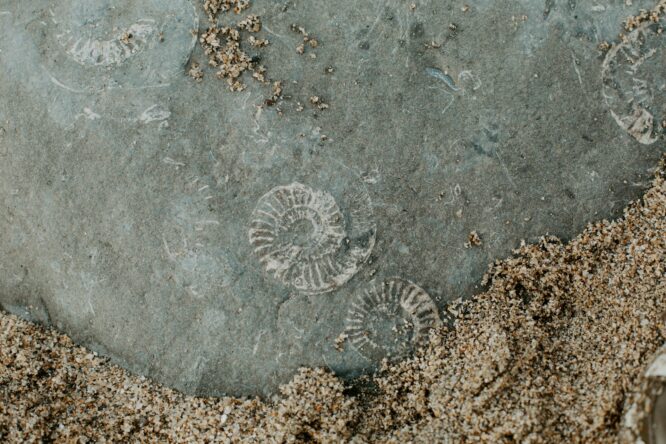
From ancient sea creatures to prehistoric plant life, these are some of the most common fossils beachcombers come across, and what they can tell you about Earth’s long-forgotten past. It might sound a bit like a silly undertaking, but it’s actually pretty fun and fascinating, so don’t knock it ’til you try it!
1. Ammonites

Ammonites are the poster child of UK coastal fossil hunting. With their beautiful spiral shape and ribbed shell patterns, they’re hard to miss once you know what to look for. These marine molluscs lived around 240 to 65 million years ago and were closely related to modern-day squid and octopuses.
You’ll often spot them in limestone or shale along beaches in places like Lyme Regis or Whitby. They range in size from thumbnail-sized curls to dinner-plate giants, and finding one is like holding a piece of deep time in your hand.
2. Belemnites
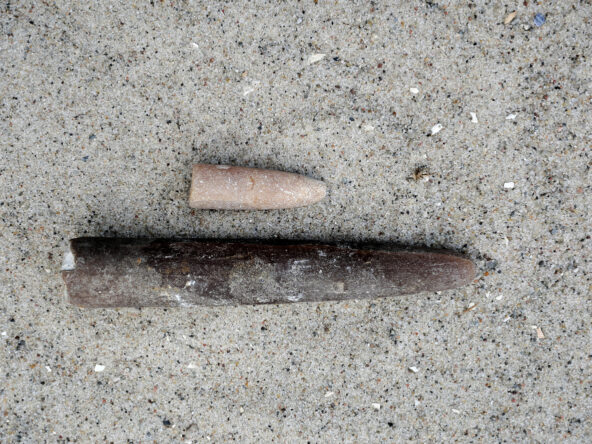
These bullet-shaped fossils look like little stone cigars or smooth darts. Belemnites were squid-like creatures with a hard internal skeleton, and what you’re finding is usually the central part known as a guard or rostrum. They’re incredibly common on many UK beaches, particularly along the Jurassic Coast. If you spot lots of smooth, grey, pointed stones that all look strangely alike, chances are you’re looking at a belemnite graveyard.
3. Brachiopods
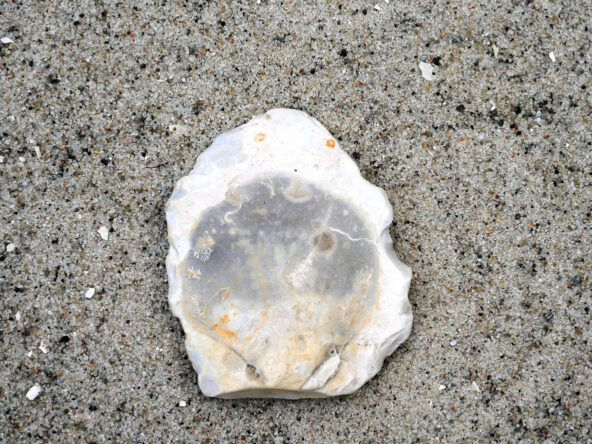
These shell-like fossils often get mistaken for clams or mussels, but brachiopods are a distinct group of ancient marine animals. They’ve been around for over 500 million years and are found in rocks across many coastal areas. What makes them interesting is their symmetry: while bivalves are symmetrical between shell halves, brachiopods are symmetrical from top to bottom. Look closely for ridges, fan shapes, or smooth domes embedded in rocks or eroded out along cliffs.
4. Crinoids
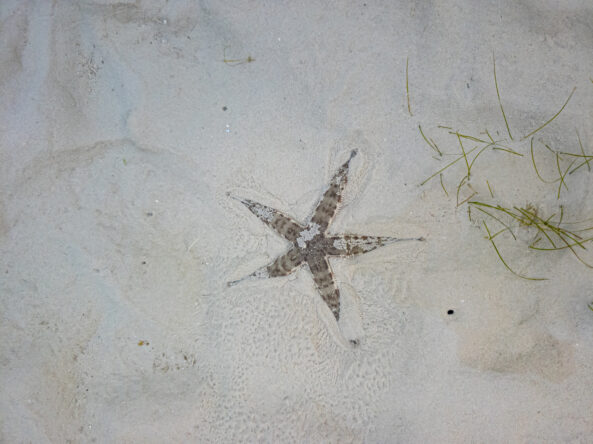
Sometimes called “sea lilies,” crinoids were marine animals with feathery arms and long stalks that anchored them to the sea floor. What you’ll usually find are the tiny, coin-like segments from their stems, often nicknamed “St Cuthbert’s beads.” These small, round or star-shaped fossils are easy to miss at first but become incredibly satisfying to spot once your eye is trained. They’re especially common in limestone-rich areas and are great beginner finds.
5. Trilobites

Trilobites are one of the oldest and most iconic fossils out there. These extinct arthropods lived in ancient seas long before the dinosaurs, and their segmented, bug-like bodies are instantly recognisable to fossil fans.
Complete trilobites are rare and valuable, but fragments, especially head shields or tail sections, are more common. You’re more likely to find them in older rock formations, such as in Wales or parts of Scotland, but they can pop up in coastal exposures too.
6. Fossilised wood
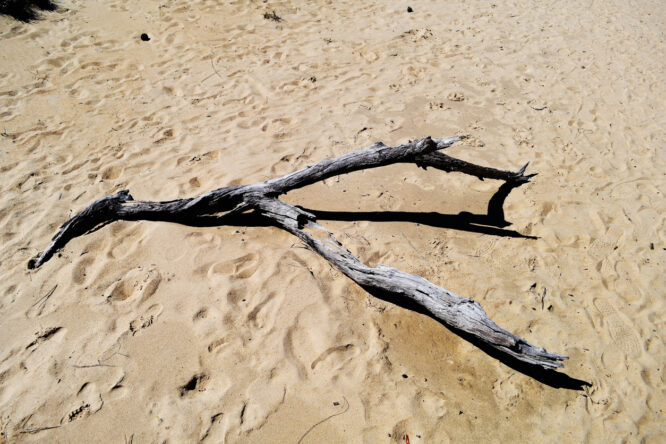
Yes, even trees can fossilise. Petrified wood often turns up on coastal walks, especially in areas where prehistoric forests once stood. It usually looks like ordinary driftwood at first—until you notice how heavy and stone-like it is. The grain and bark texture can be preserved in stunning detail, and some pieces even show mineral veins running through them. Fossilised wood is a subtle but fascinating reminder that the coastline wasn’t always ocean.
7. Coral fossils
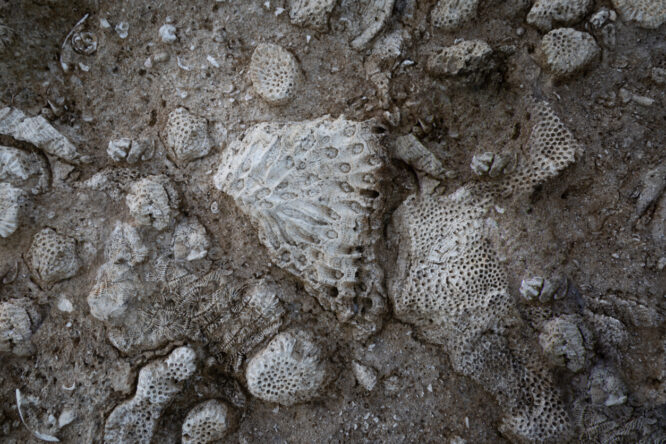
Fossilised corals look like honeycomb or patterned rock and often come from ancient tropical seas that once covered parts of the UK. They can appear in chunks, with small holes or radiating lines showing the structure of the coral colonies. You’ll likely find them embedded in larger limestone rocks, especially in areas like the Somerset coast or parts of the Welsh coast. They’re beautiful, textural finds that hint at warm, shallow seas long vanished.
8. Shark teeth
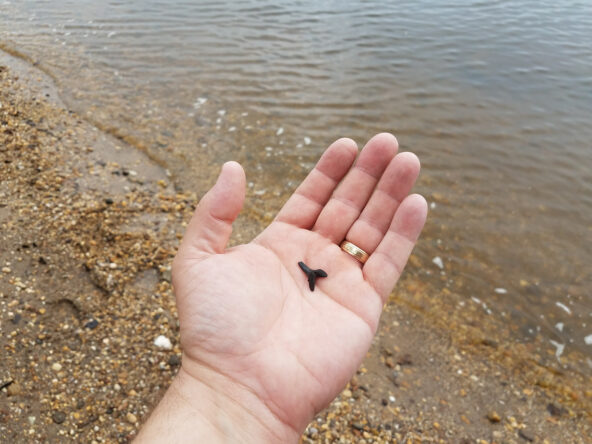
Shark teeth are among the most sought-after beach fossils, and they’re more common than you might think. These black, triangular teeth often wash up loose and can range in size depending on the species and age. Places like Walton-on-the-Naze in Essex are known for fossil shark teeth, some of which date back millions of years. Keep your eyes peeled for their glossy sheen and sharp shape hiding in seaweed or shingle.
9. Fish scales and bones
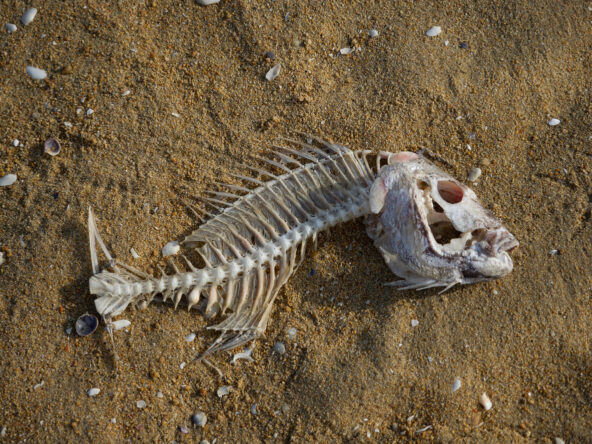
Fish fossils tend to be more delicate, but it’s possible to find scattered scales, vertebrae, or even impressions of an entire fish if you’re lucky and looking in the right sedimentary layers. Look for thin, plate-like shapes or pebbles that seem to have a repeating texture. These kinds of fossils are less obvious than ammonites, but they tell just as rich a story of ancient underwater ecosystems.
10. Dinosaur footprints (yes, really)
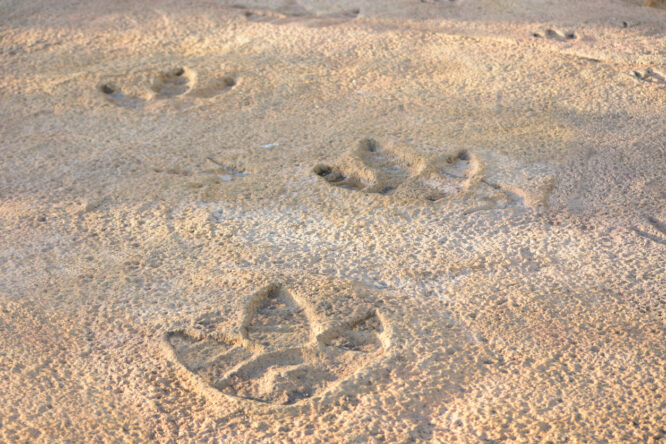
While rarer than most items on this list, there are a few spots in the UK where you can find real dinosaur tracks preserved in coastal rock. The Isle of Wight and parts of the Yorkshire coast are especially famous for this.
You’ll need the right conditions, usually low tide and good lighting, to see the indentations clearly, but it’s a mind-blowing experience to walk where dinosaurs once did. Just be sure to observe without removing or damaging them—they’re protected pieces of history.




